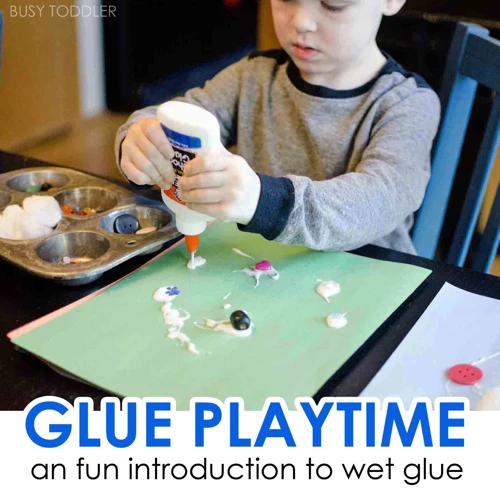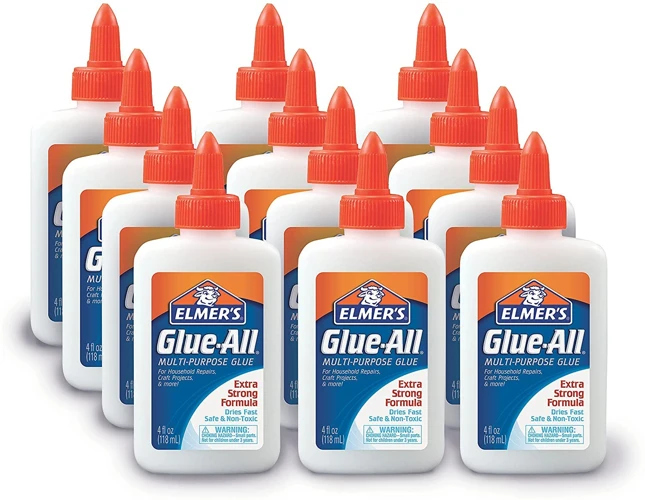What is Gloopy Goo and Why it’s Fun
Imagine a substance that can stretch, squish, and provide hours of entertainment. That’s Gloopy Goo, a playful and stretchable material that has captivated the curiosity of kids and adults alike. This fascinating creation isn’t just a toy; it’s a hands-on experience that encourages creativity and provides a tactile way to relieve stress. The joy of making and playing with Gloopy Goo lies in its simplicity and the endless possibilities it offers for fun and learning.
Essential Ingredients for Goo Making
Understanding the Role of Starch and Glue in Goo
At the heart of every batch of Gloopy Goo are two crucial components: starch and glue. Starch acts as a thickening agent, lending the goo its unique non-Newtonian fluid properties, while glue provides the adhesive, stretchy quality that makes goo so satisfying to handle.
Finding the Right Glue for Your Goo
Selecting the appropriate glue is vital for your goo’s texture. A clear PVA (polyvinyl acetate) school glue is commonly recommended for its nontoxic and washable nature, ensuring safe play for all ages.
Choosing the Best Starch: Purex Sta-Flo Concentrated Liquid Starch
For the starch component, the Purex Sta-Flo Concentrated Liquid Starch is a top choice. This starch has been preferred for its consistency and reliability, ensuring your goo has just the right texture every time.
Gloopy Goo Instructions: How to Make Goo with Starch and Glue
Step-by-Step Guide to Making Goo
- Begin by gathering your materials: Purex Sta-Flo Concentrated Liquid Starch, PVA glue, a mixing bowl, and a mixing spoon.
- Pour 1/2 cup of glue into the bowl.
- Gradually add 1/4 cup of liquid starch to the glue, stirring continuously.
- Mix thoroughly until the mixture becomes gooey and starts to pull away from the sides of the bowl.
- Knead the mixture with your hands until it reaches a pliable, stretchy consistency.
Tips for Achieving the Perfect Gooey Consistency
- Adjust the amount of starch if the goo is too sticky or too rigid.
- For a smoother texture, knead the goo on a clean surface for a few minutes.
- If the goo becomes too dry, add a few drops of water to soften it.
How to Make Glue from Starch: A DIY Approach
The Science of Transforming Starch into Glue
The process of how to make glue from starch is a simple yet intriguing chemical transformation. Starch, when mixed with water and heated, undergoes a change, resulting in a sticky paste that has adhesive qualities similar to glue.
Homemade Starch Glue Recipe
- Mix equal parts of cornstarch and cold water.
- Stir the mixture over medium heat until it thickens into a paste.
- Allow it to cool before using it as a homemade adhesive.
Where to Find Your Materials
Finding Purex Sta-Flo Concentrated Liquid Starch
Sourcing the right materials can be as simple as a trip to your local supermarket or craft store. The Purex Sta-Flo Concentrated Liquid Starch can typically be found in the laundry aisle, known for its blue bottle and distinctive label.
Locating Spray Starch in the Target Aisle
If you’re searching for a spray version, the spray starch Target aisle is your go-to spot. Target stores have a variety of starches, including spray options, conveniently located in the laundry section.
Fun with Goo: Creative Ideas and Activities
Experimenting with Colors and Add-ins
- Add food coloring or paint to create vibrant hues.
- Mix in glitter, beads, or confetti for a sparkling effect.
- Integrate scents with essential oils for a multi-sensory play.
Goo Games and Educational Opportunities
Gloopy Goo isn’t just about fun; it’s a gateway to learning. Use it to teach children about viscosity, polymers, and non-Newtonian fluids. Challenge them with games that involve stretching and measuring the goo to integrate math skills.
Maintaining Goo Over Time
Storage Tips for Long-lasting Goo
Proper storage is key to preserving the life of your Gloopy Goo. Place it in an airtight container and store it at room temperature away from sunlight to maintain its consistency.
Reviving Your Goo: A Quick Fix
Over time, goo can lose its elasticity. To revive it, knead in a few drops of water or liquid starch until it regains its original gooeyness.
Conclusion
If you’re looking to get your hands dirty with some fun DIY goo-making projects, you’ve come to the right place! Our step-by-step guides can help you create your own gooey concoction using simple household ingredients. Discover the art of making goo by exploring our tutorials on how to make goo with glue and soap, find out the magic behind how to make goo with cornstarch and glue, or keep it classic with our guide on how to make goo with glue and water. Each method offers a slightly different texture and consistency, so why not try them all and see which one you like the best?
Recap of Goo-Making and Additional Resources
In conclusion, learning how to make goo with starch and glue is a simple, enjoyable activity that offers a wealth of creative and educational benefits. With the right materials and a bit of know-how, you can create a plaything that delights the senses and sparks the imagination. For more information, seek out additional resources online or at your local library to expand your goo-making adventures.


